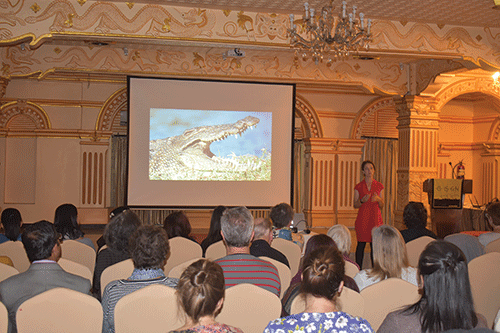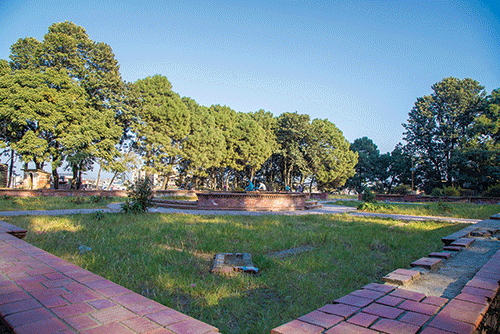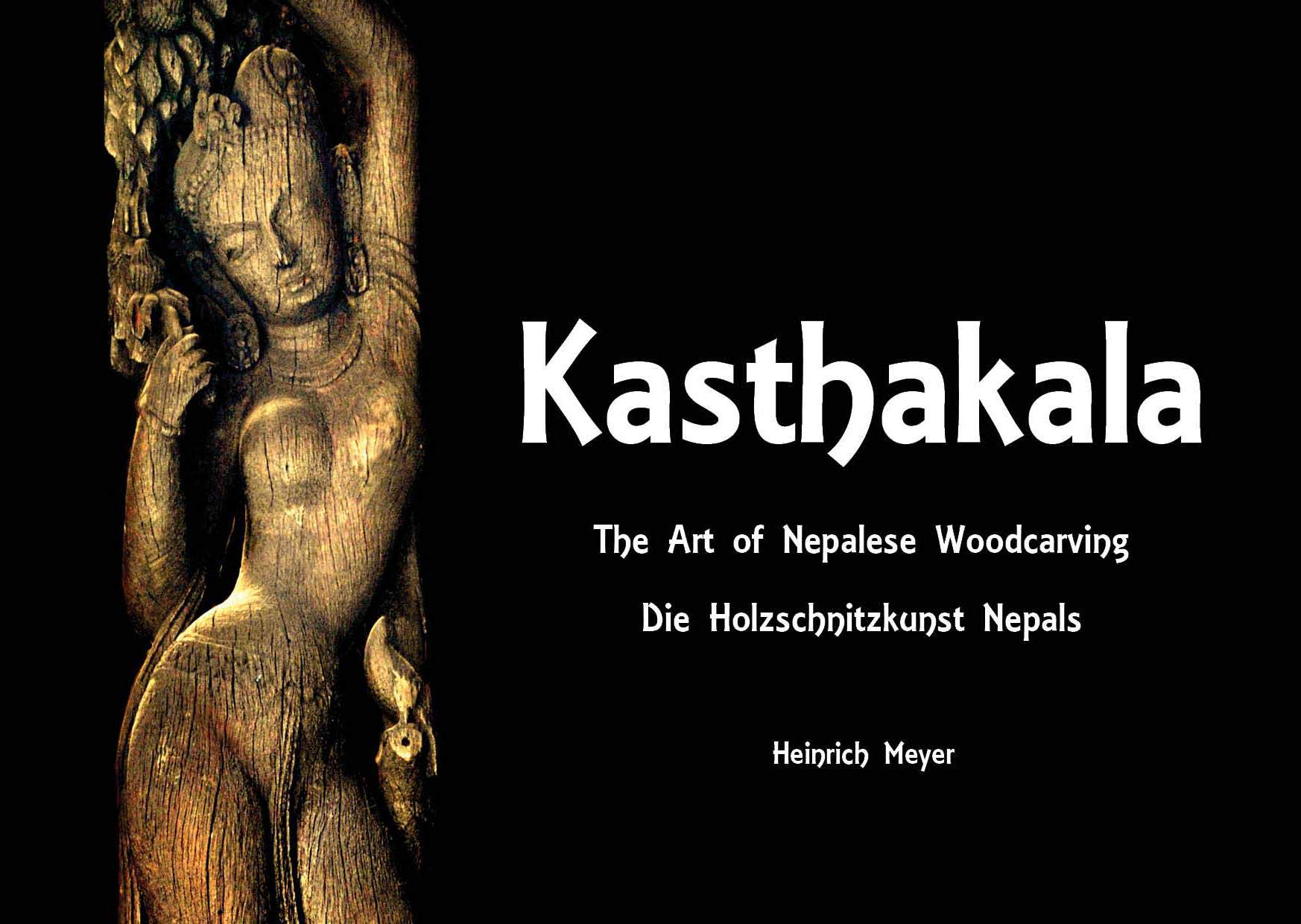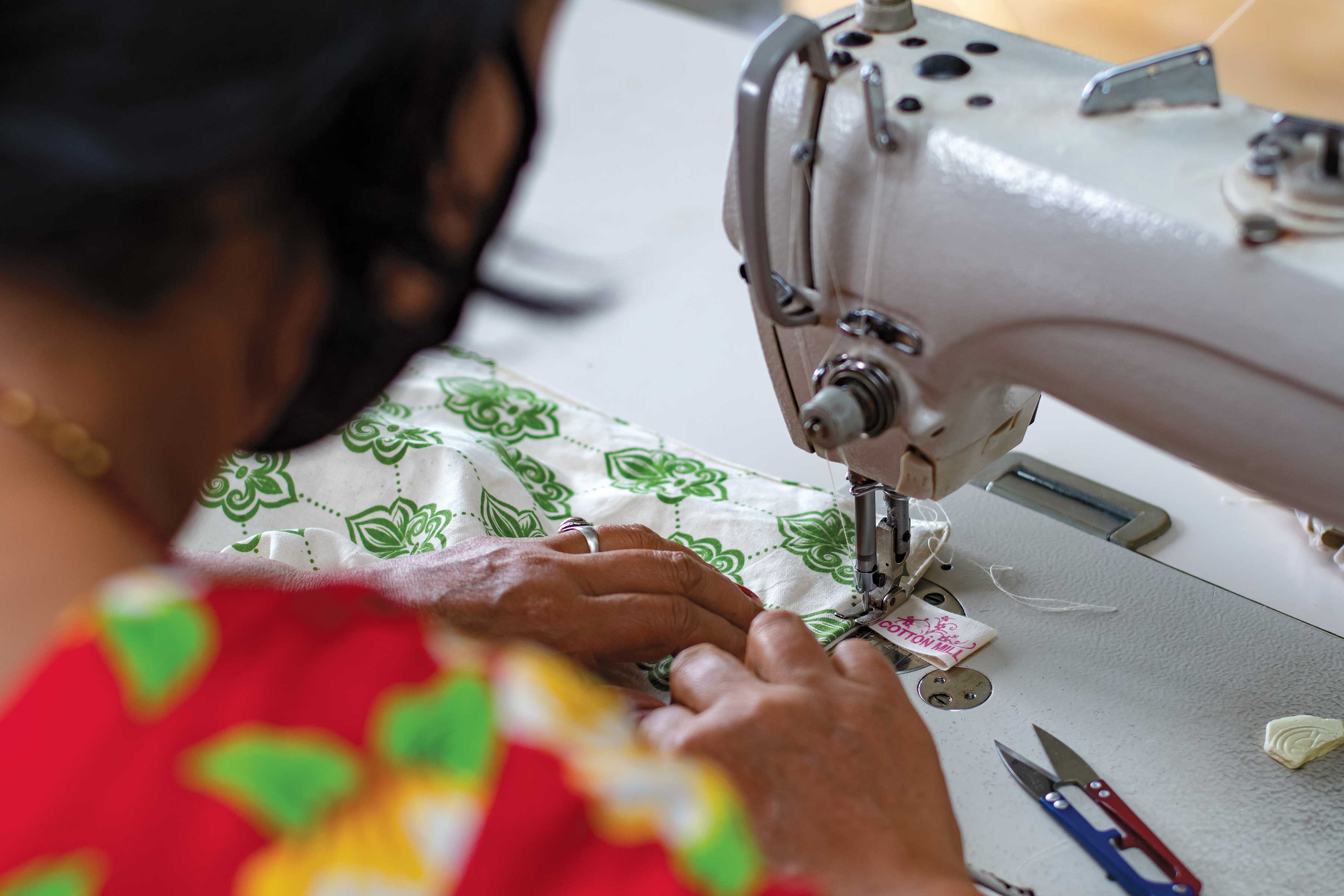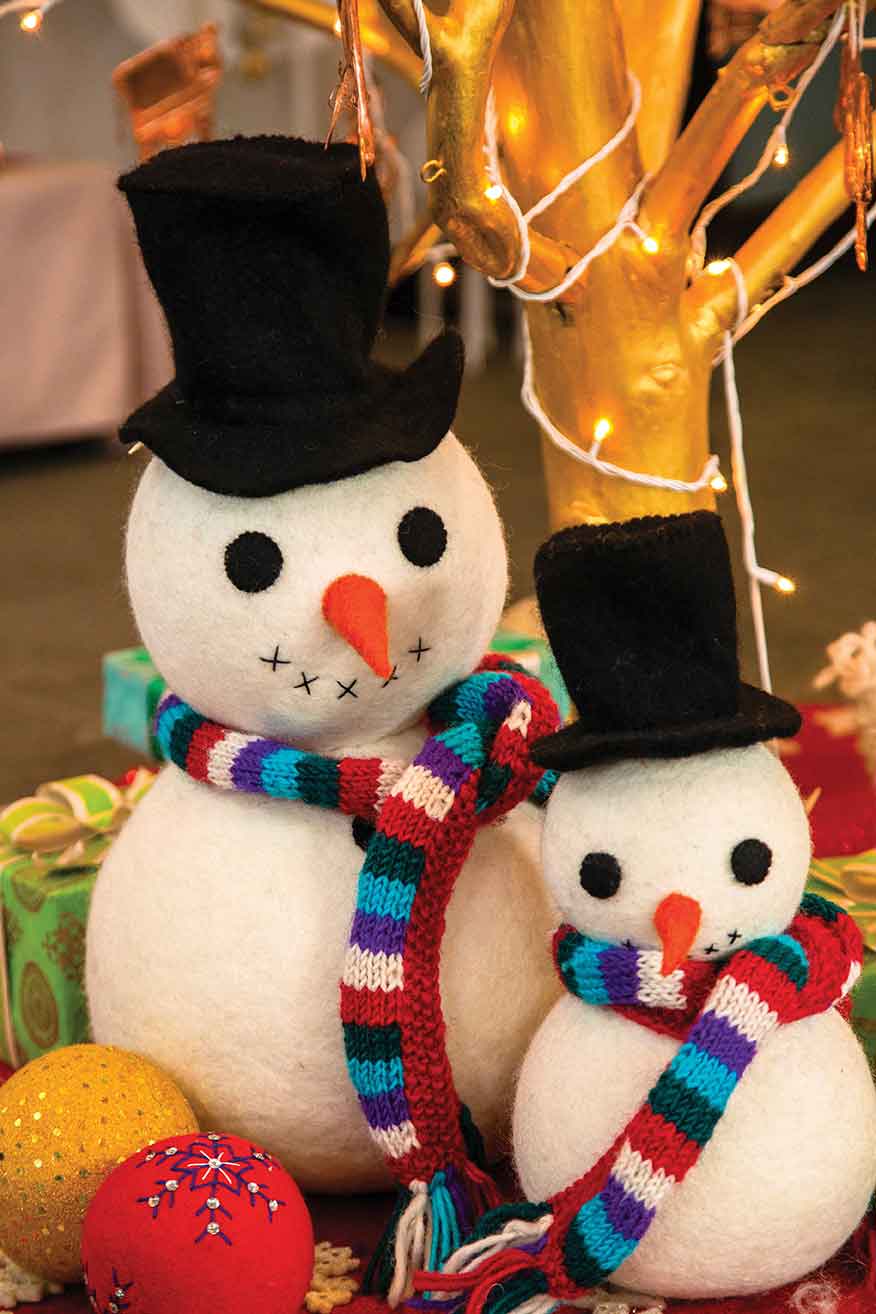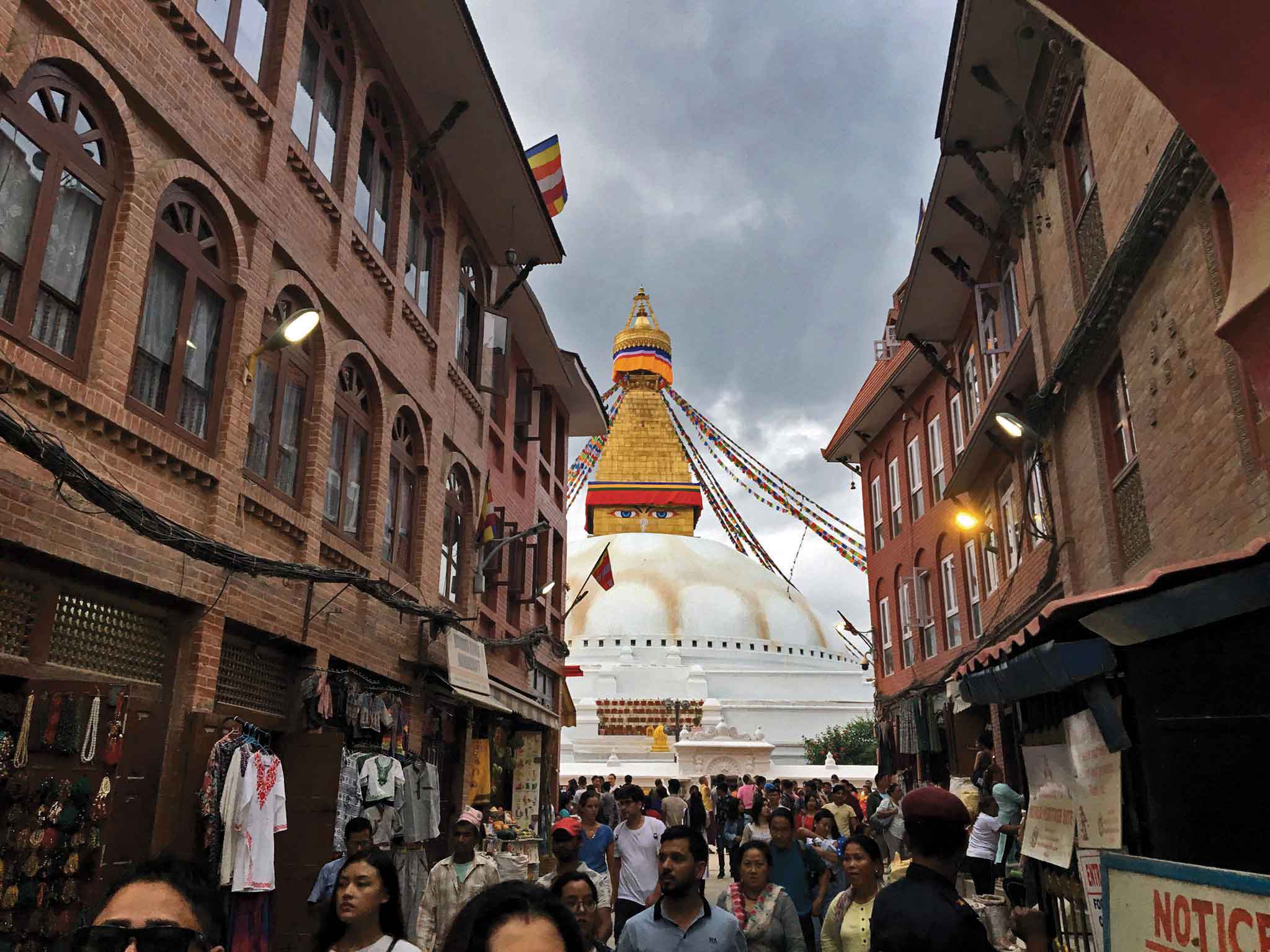It is a great feeling when, just like that, a random scent triggers sweet memories. That happens to me a lot, and when it does, it triggers an avalanche of related memories. Two of these ‘scent-triggered’ memories have to do with Dashain and Tihar, two of our most popular festivals. When this happens, I also find myself comparing the images my mind conjures up from bygone days to the present time and how things have changed. The differences are, to put it mildly, quite stark.

An offering of money, fruits and an assortment of edibles decorated with flowers and a diyo is traditionally made to those who come to play deusi and/or bhailo from house to house during Tihar
The first of these memories involves paint – yes, the kind that you apply to the walls of your house. Anytime I smell freshly applied paint, the sickly, oddly-sweet smell reminds me of the massive paintjobs at our shop and house come festival season. Cleaning the house is a way of purifying it to welcome Laxmi, the Hindu Goddess of Wealth and Prosperity, and in Nepal’s villages, this is done by washing the courtyard and giving the mud walls of the house a fresh coat.
The cool autumn breeze heralds the arrival of the festive holiday season in the country, the time of the year when past grievances are forgotten (if not forgiven) and people take time out to get in touch with family and friends. Cleaning the house and giving it a fresh coat of paint is a tradition in most homes in Nepal and the same is true in our household. It has been that way for as long as I can remember and so, whenever I smell fresh paint, I feel the air go a bit colder as the mornings and evenings get a little chillier in Kathmandu during this time.
Those were the days when children were free to cycle around the New Road saalik (statue mounted on a round ‘pedestal’) of one of the Rana-era prime ministers, Juddha Shumsher. The streets would be free of traffic during Dashain and Tihar in those days unlike the constant hustle bustle of the area today, and people would pour into the streets for a game of badminton or, perhaps, try a hand at hitting a six smashing a neighbor’s window in the process while playing ‘street-cricket’! Together with the smell of traditional food being prepared, the smell of freshly applied paint would linger in the sweet, cold air.

A typical oil-fed lamp which is lit in the thousands in almost every household during Tihar
Weirdly enough, I have always quite loved this smell and as a child. I would look for reasons to stick around and watch the painters work on the walls and then on the ceilings, their clothes and faces dotted with paint. At the end of the day, the place would look and smell amazing. And after the final decorations, butter lamps in front of the images of gods and goddesses, diyas (special, small oil-fed lamps) on the steps and landing of the house, marigold garlands hung on the doorway and the colorful rangolis (different patterns made using vermilion powder of different colors) courtesy my sister and mother, we would be ready for Laxmi to pay us a ‘visit’.
Another scent-triggered memory from the same time is the smell of smoke from a wood fire. On my way back from my infrequent morning jogs, I often encounter this smell from small houses. This, too, immediately reminds me of Dashain and Tihar. Wood fires are not as common in Kathmandu households anymore; a good thing considering that greenery, too, is not common in the city anymore. However, it is a known fact that food cooked on a wood fire has a distinctly delicious taste, not to mention that oddly, appetizing smell of burnt wood that’s lacking in cooking done using a modern gas stove.
When I was young, in fact even now, my grandmother would collect wood and set up a small mud-and-brick stove to prepare sel roti (a special kind of ‘sweet bread’ made from rice flour and one that is unique to Nepal). In front of this fire, my grandmother would sit; red sari, reading glasses low on her straight nose, traces of sweat on her brow as well as white specks of the ash from the fire settling on her colored jet, black hair. My grandfather, the sweet guy that he is, would be there holding a large umbrella over his wife’s head, providing shade to his better half from the harsh morning sun.

Traditonal swings are erected for children’s enjoyment during Dashain
Making sel roti is a traditional practice, especially during Tihar, and is also sometimes prepared and served during certain ceremonies. It is very popular with young and old alike and is also distributed to young people after playing the customary deusi, a song-and-dance routine where these youngsters wish prosperity on households as they tour around the neighborhood. Even today, my little brother and sisters are still excited about sel roti and hover around our grandmother’s peculiar-looking outdoor kitchen, expecting her to pass some on to them as the rotis (bread) are being prepared. A large portion of the sel rotis would go out to our relatives. We would collectively devour the rest over breakfast and tea and in between after having them heated lightly on the gas stove.
Dashain and Tihar mean these things to me – cleaning the house, decorating it with all your family members participating, large, noisy get-togethers, amazing traditional food and coming together to pray during elaborate puja (prayer) ceremonies. Dashain symbolizes the victory of good over evil, and today, this can stand for many things. To conquer your fears and achieve something is as much of a victory. Tihar, on the other hand, stands for celebrating life and brings along a good opportunity to remind us of all that that is important in life, including family and staying true to ourselves. My memories of Dashain and Tihar therefore are very wholesome and happy.
Today, these festivals are still as popular in Kathmandu as well as all over the country. However, as extravagant as the festive season has become, there has been a sort of clouding over on the reasons we celebrate these great festivals and also how we go about celebrating them. The merriment and wholesomeness seem a bit lost somehow as decorating your house and/or shop better and giving extravagant gifts to your relatives that compete with those of others has become more of an unnecessary financial burden. Whiling away the holiday season playing cards (sometimes for large amounts of money) and consuming huge doses of alcohol have become alarmingly popular (causing many a drunken brawl) not to forget the distinct spike in accidents due to drunken driving. Playing cards and drinking are a part of our tradition, too, but not like this where the essence and charm of the holiday season actually gets lost.

It’s Tihar! The streets of some sections of Kathmandu lined with vendors selling multi-colored flowers and garlands
So this year, as we sit in front of the mandap (a specially decorated and sanctified area in or around the house) for Mha Puja (prayer for oneself practiced among the Newar community)), or gift our sisters something during Bhai Tika (bhai: brother, tika: decorative ‘dab’ on the forehead), let us all ponder over it and do some soul searching. Remember that it is the ‘thought’ that counts after all and not the extravagant gifts and presents, not to mention the other spending sprees. Let us think about why these festivals are celebrated, what the traditions associated with them mean and how they are still so relevant in today’s context. Let us make an effort to talk about this with our younger siblings and make them understand that Dashain and Tihar are not just about shopping and a break from school. These festivals mean much, much more.
We celebrate these festivals and what they represent because even in the 21st century, they still bind us together as a society. It’s important to remember this. And that while our unique culture and traditions differentiate us from the rest of the world, it is what we have in common with each other as Nepalis.


